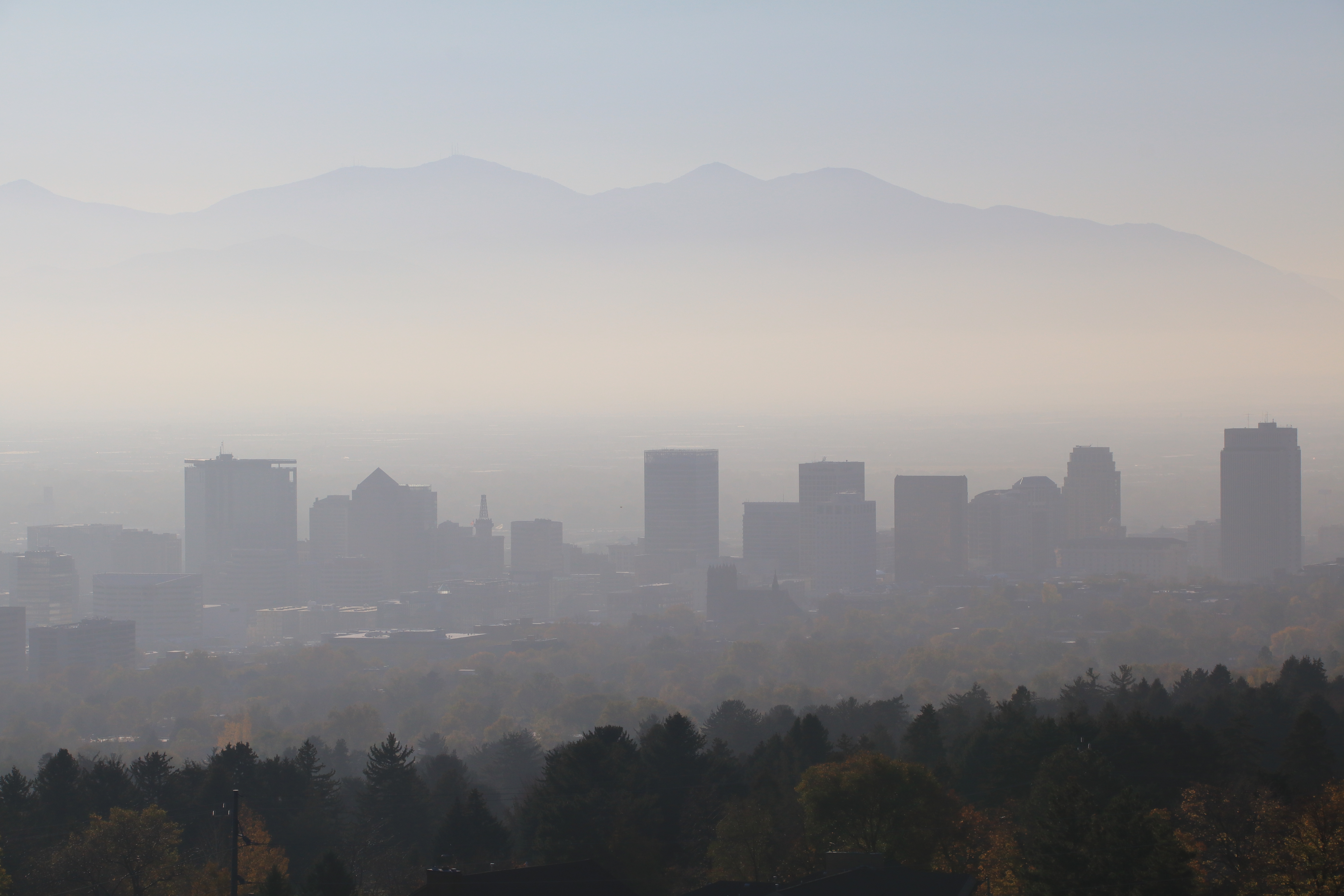
By: Nicholas Apodaca, Graduate Assistant, Sustainability Office.
As Utah residents know well, air quality can have a serious effect on our daily lives. Wildfires, inversions, dust, and pollution colliding with the complex geography of the Salt Lake region all contribute to the thick haze that can settle over the valley. However, the exact conditions and effects of these issues are not yet completely understood.
John Lin, professor of atmospheric sciences here at the University of Utah, will shine some light on these regional air quality problems in his lecture on Tuesday, September 11 in 210 ASB as part of the Global Change & Sustainability Center’s annual seminar series. Lin will lay out some of the complex conditions that affect air quality, and show just how interconnected they are to greenhouse gas emissions and climate change across the West.
He’ll explain how air quality can be indicative of many diverse conditions converging.
Of major concern in Lin’s research on Salt Lake City is dust blown off the Great Salt Lake. As the climate warms and water levels lower more frequently, dust is increasingly exposed to the air and carried into the atmosphere. Salt Lake City’s proximity to the lake leaves it particularly susceptible to the ill effects. This lake dust also effects snow, as it settles on the snowpack and causes it to melt faster.
Wildfires also play a big part in introducing particles to the atmosphere. Smoke from across the West can move hundreds of miles in the atmosphere to Utah. As climate change makes fires more frequent and intense, the relationship between global processes and regional air quality becomes more evident.
This relationship is visible in our daily lives.
“When we drive, the stuff that comes out of our tailpipes includes greenhouse gases but also NOx [Nitrogen Oxide] and PM2.5 which cause air quality problems,.” Lin said.
Often the source of local pollution is the source of emissions that drive climate change. Each contributes to a feedback loop that exacerbates their combined effect.
Lin’s research at the U has begun to uncover and understand the sources of these problems. Through two research groups, LAIR and U-ATAQ, Lin has used extensive data from a complex network of air quality monitoring systems throughout the region. The TRAX Air Quality monitoring system installed four years ago has been a major player in this network. The system has allowed Lin and his colleagues to closely monitor the valley’s air in its most densely-populated areas. Working together with city government, this research is directly informing new air quality initiatives in Salt Lake City. Collaborative work with the University of Utah Medical School is also applying this data to public health research.
The possibilities emerging from an understanding of how air quality and climate change intersect may have positive consequences outside of Utah.
“There’s a fair bit of interest from cities around the West who want to reduce emissions,” said Lin. “The cities are at the forefront, and hopefully the scientists can help in some way. What we hope to do is use our research to help assess if, with new measures in place, the reduction in emissions are actually happening.”
Come to Lin’s seminar, ” “The greenhouse gas-air quality nexus: experiences from the Western U.S.” at 4 p.m. in 210 ASB on Tuesday, September 11 to learn more about this cutting-edge research of the intersection of air quality and climate change, and how it affects us here in Salt Lake City and the West.
